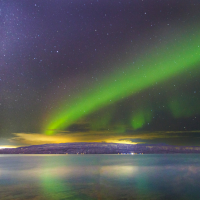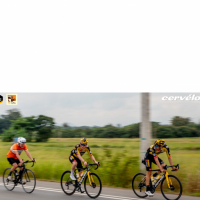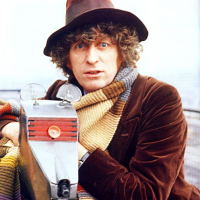83rd Tour de Suisse, June 15th-23rd 2019 *Spoilers*

blazing_saddles
Posts: 22,730
The Tour de Suisse ends two weeks before the Tour de France starts and, along with the Critérium du Dauphiné, the race is seen as an ideal race to test the shape before the July showdown. The 2019 edition starts on Saturday 15 June with a short ITT to finish with the Queen Stage on Sunday the 23th. Featuring two mountain stages and another ITT, the last weekend is probably going to be decisive. Richie Porte is title holder. He won last year’s GC ahead of Jakob Fuglsang and Nairo Quintana.

Stage 1: Langnau 9.5kms ITT
The 1st stage of the Tour de Suisse is a flat individual time trial of 9.5 kilometres. It is an out-and-back race in the Emme valley with Langnau as its start and finish hub.
The Tour de Suisse kicks into gear on an extremely fast course. It is flat and features only three corners. The route follows the river Emme until Lauperswil to head back on the same road.
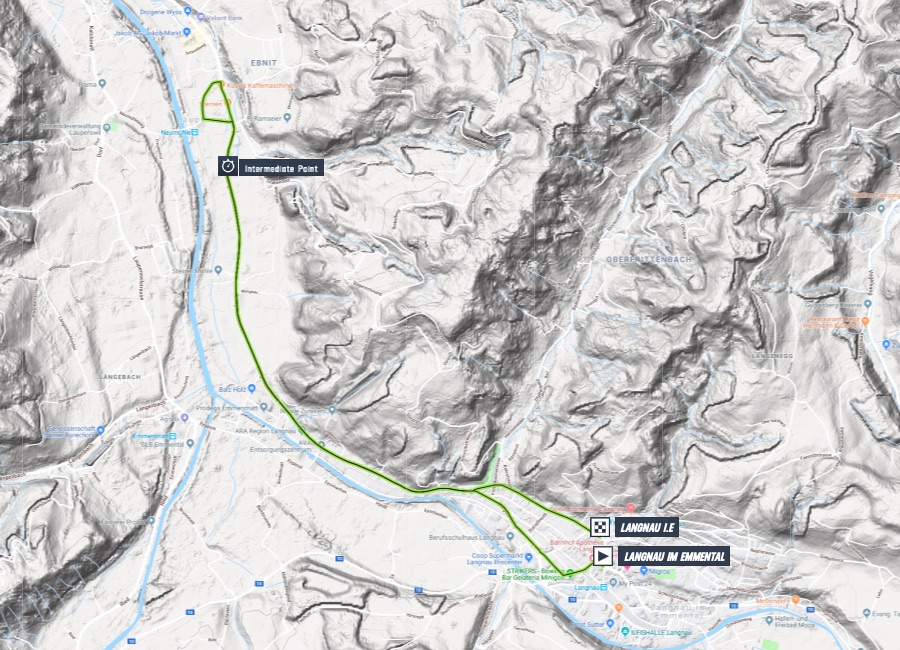
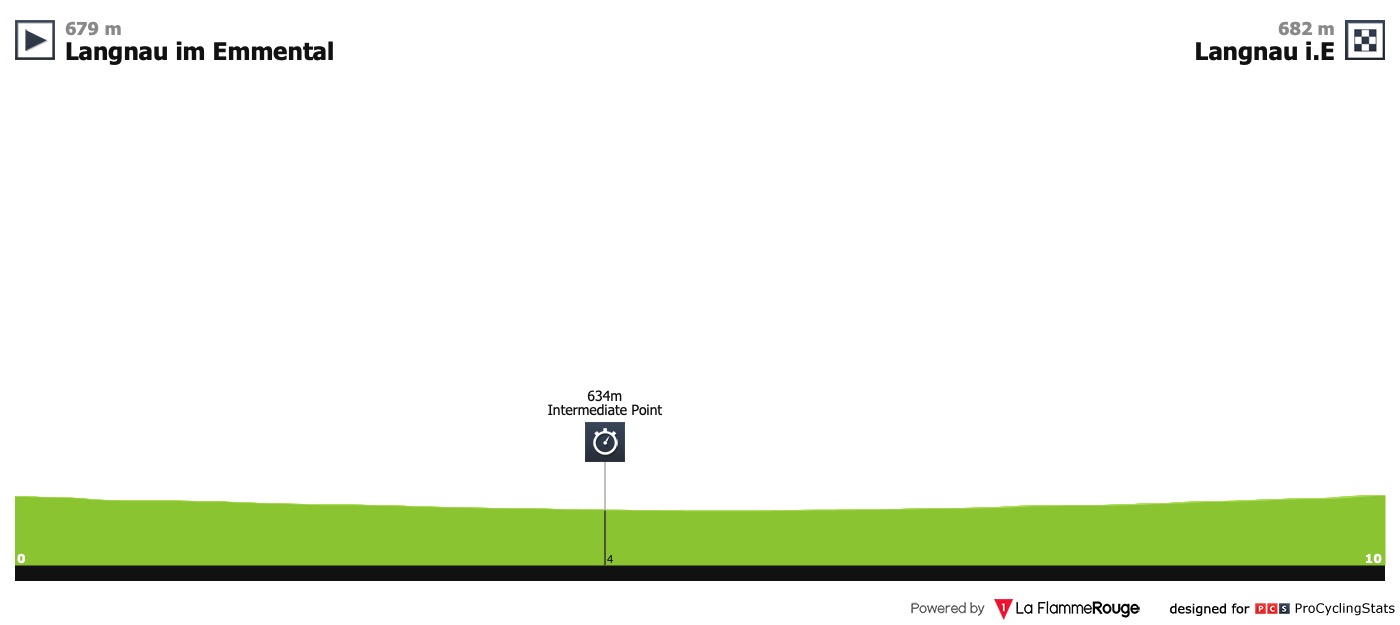
Stage 2: Langnau im Emmental › Langnau im Emmental (159.6k)
The Tour de Suisse serves up a circuit race around Langnau on the second day of action. The hilly route of 159.6 kilometres takes in an altitude gain of 2,532 metres.
The 2nd stage includes three identical rounds of 53.2 kilometres. The Schallenberg is crested 21.1 kilometres into each lap and straight after the descent it goes back up again on the Chuderhüsi Pass, which is crested at kilometre 33.4. The route drops down to Langnau for a passage on the line after 53.2 kilometres.
The circuit is situated south of Langnau.
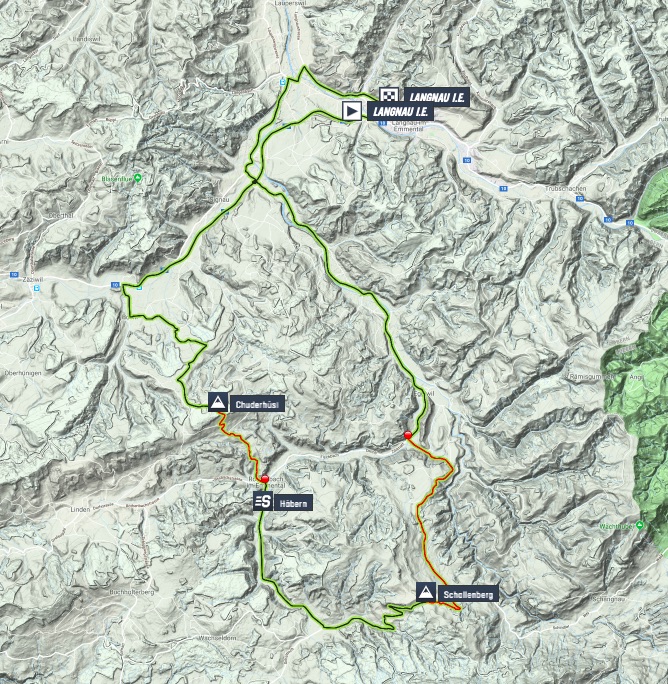

Stage 3: Flamatt › Murten (162.3k)
The 3rd stage of the Tour de Suisse is far from flat, yet a bunch sprint is the most likely outcome at the end of the 162.3 kilometres race from Flamatt to Murten.
Following the start in Flammatt the route is a near constant uphill, although at shallow gradients. The last kilometre before the first KOM in Berg – after 27.8 kilometres – is somewhat steeper. Then the riders continue on undulating roads for the most of the day. The route loops around the Lake of Gruyère and moves through Fribourg’s historic centre – with its double digit cobbles -, while the last 30 kilometres are a lap around Lake Murten.
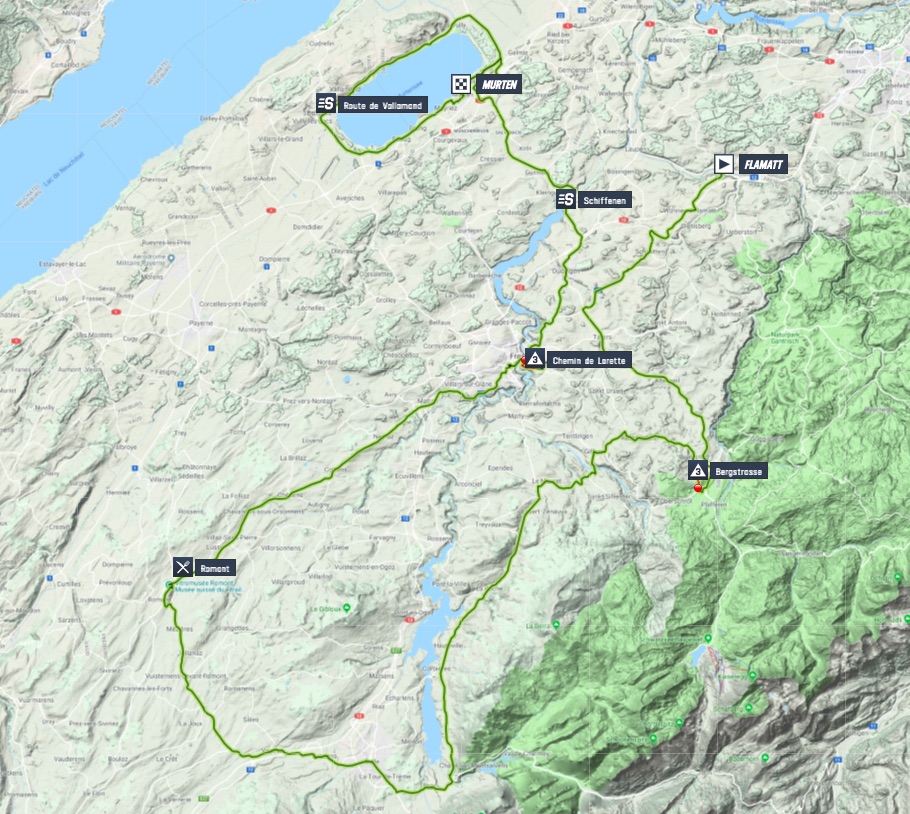
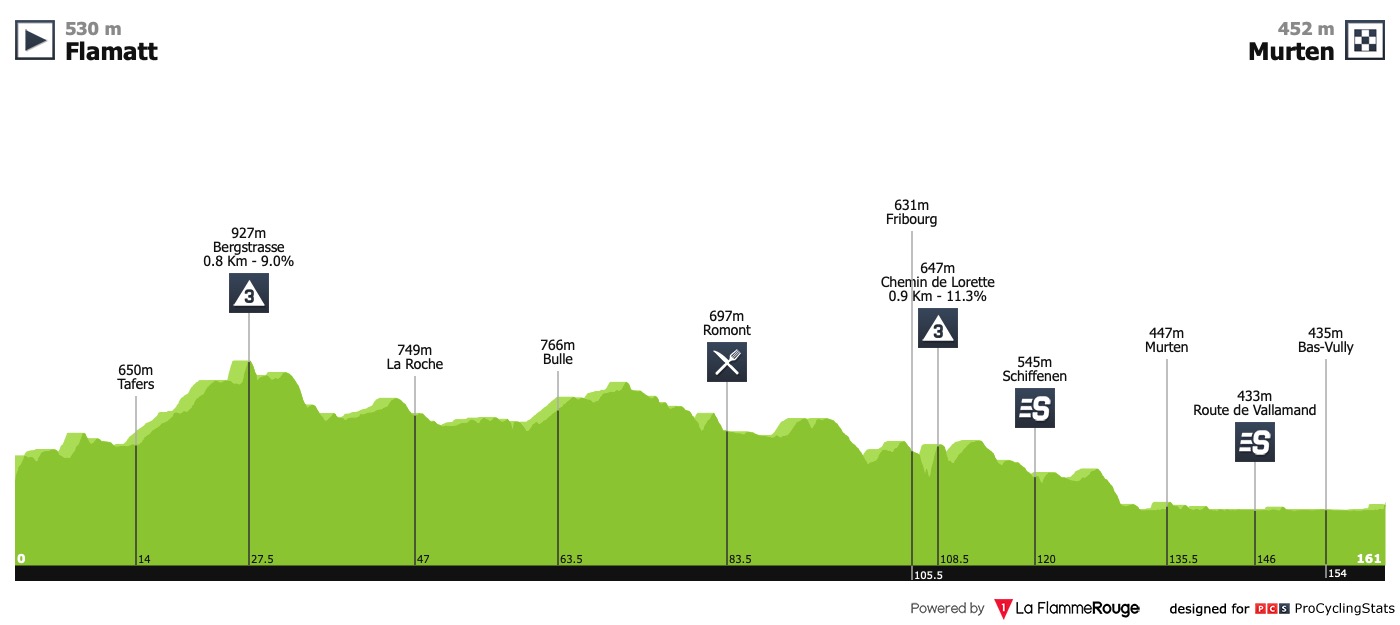
Stage 4: Murten › Arlesheim (163.9k)
At 163.9 kilometres, the 4th stage of the Tour de Suisse travels from Murten to Arlesheim. Following a predominantly flat first part, the route serves a hilly second half. A 3.4 kilometres ascent at 9.4% is crested with 14 kilometres out.
The route is mostly played out on nearly flat roads until the Passwang appears around the halfway mark. The 11 kilometres climb is marked by gradients of 4 to 5%. After the descent the route continues to go up at even shallower gradients to enter the finish loop around Arlesheim, a place just south of Basel. The punchy Hochwald climb – 3.4 kilometres at 9.4% – is crested twice, the last time with 14 kilometres remaining. A short uphill kick at the end of the downhill leads to a flat run-in to the line.
The 4th stage of the Tour de Suisse features an altitude gain of 1,980 metres, virtually all in the second half of the race.
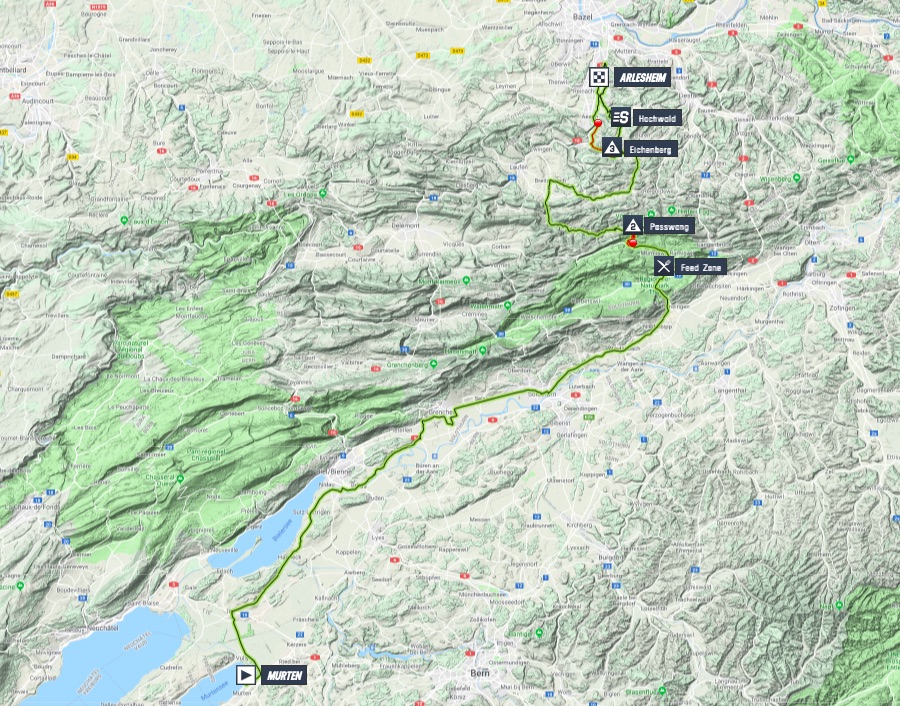
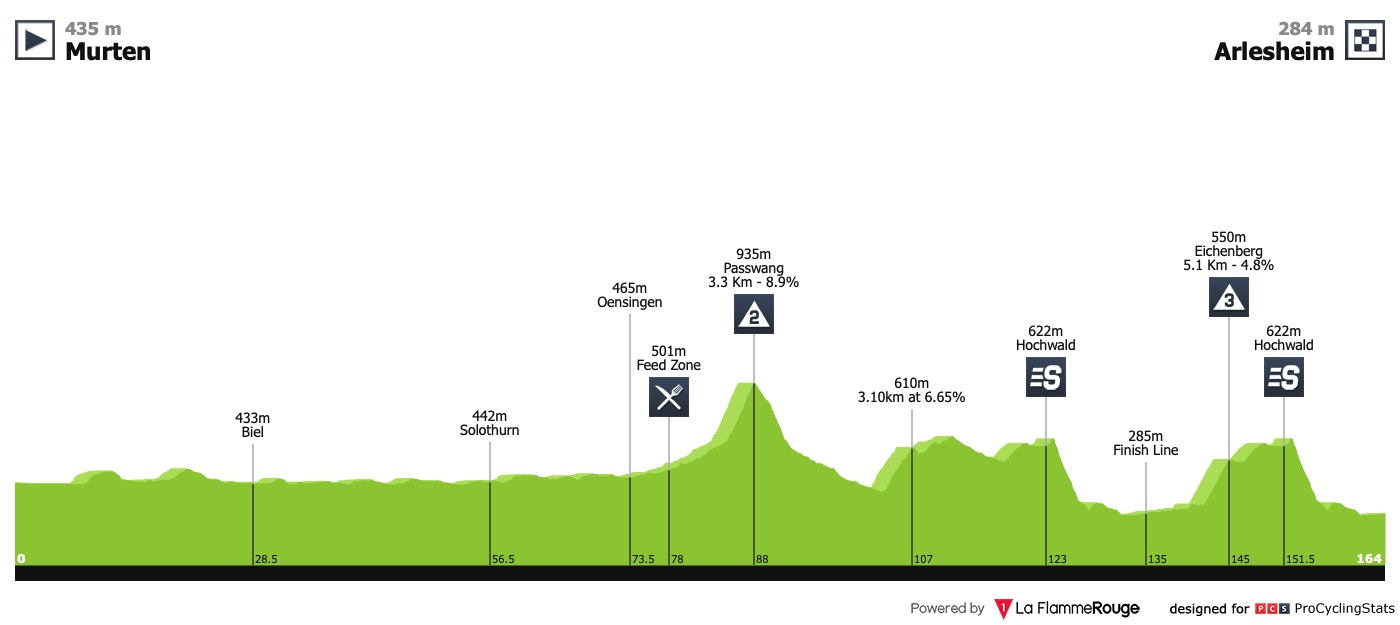
Stage 5: Münchenstein › Einsiedeln (177k)
The 5th stage of the Tour de Suisse offers the fast men a last chance to shine. At 177 kilometres, the route runs from Münchenstein to Einsiedeln and the last 35 kilometres are played out on the flat.
Yes, stage 5 is an opportunity for sprinters, yet the route is far from flat. The race features 2,750 vertical metres. But since virtually all of this is included in the first 144 kilometres a bunch sprint is still the most likely outcome.
On rolling to hilly roads the route cuts straight across the Swiss Plateau until a 10 kilometres climb at shallow gradients takes the riders to Sattel, where the caravan arrives at kilometre 143. The first passage on the finish line is at kilometre 153 before the riders complete a loop around Lake Sihl. The finish is near Einsiedeln Abbey, a Benedictine monastery that dates back to the year 934.
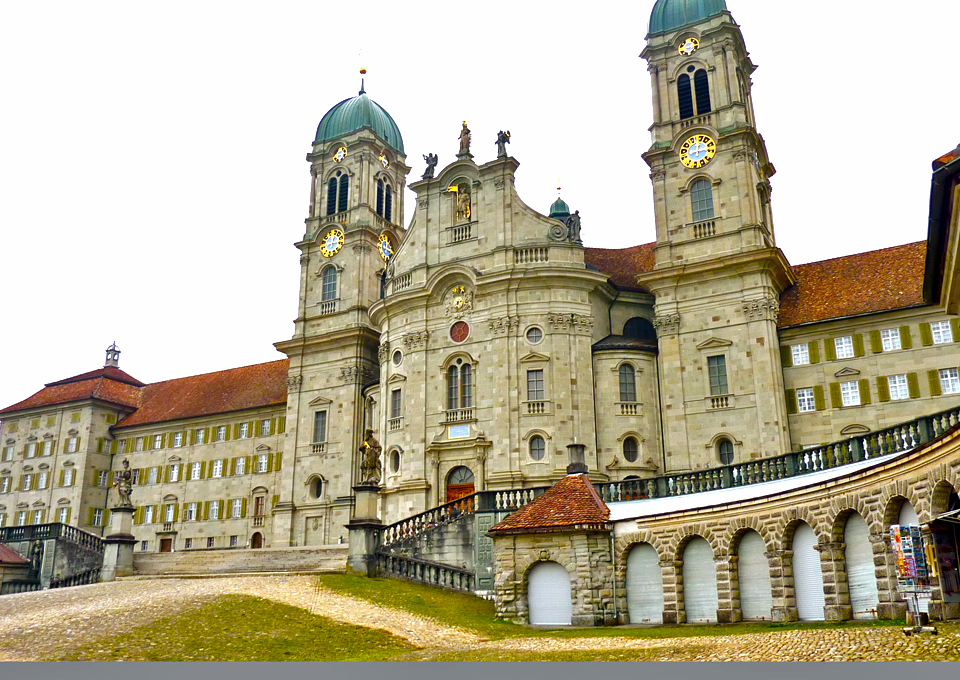
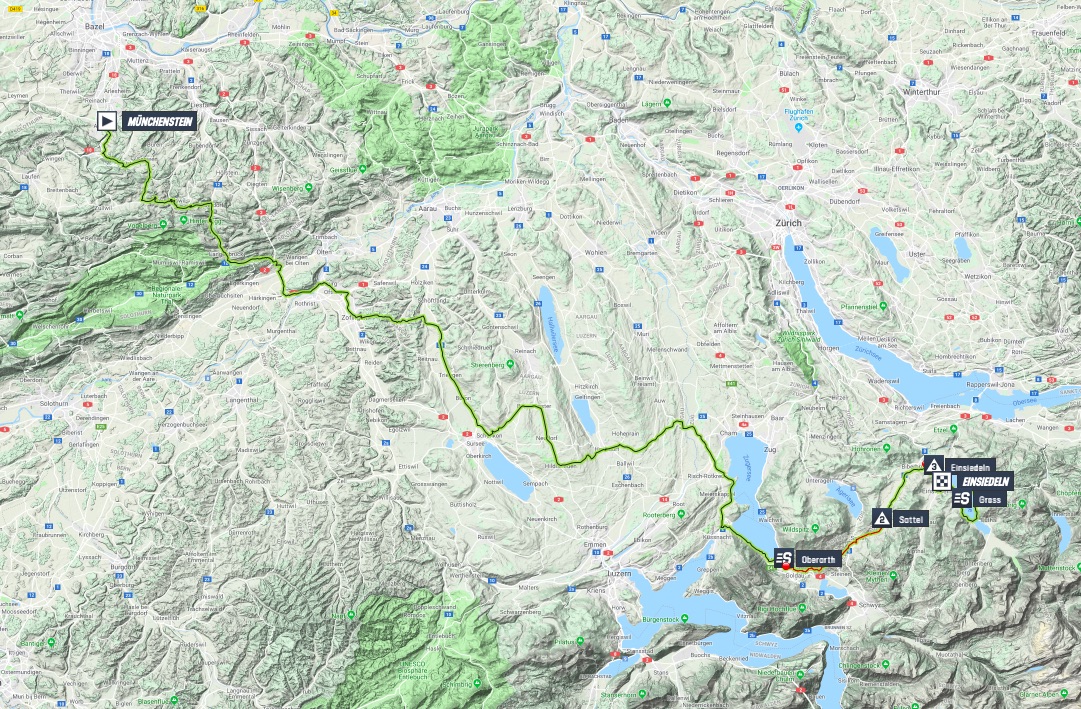
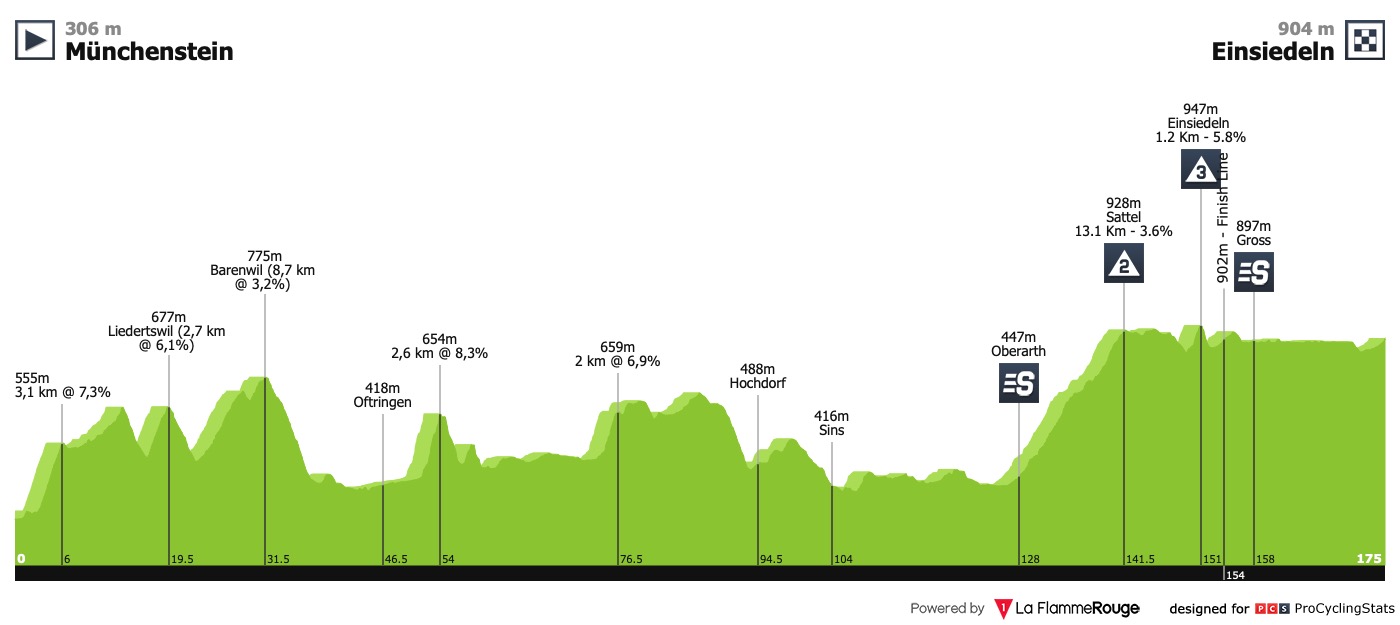
Stage 6: Einsiedeln › Flumserberg (120.2k)
At 120.2 kilometres, the 6th stage of the Tour de Suisse is the shortest of this edition. The race travels from Einsiedeln to a final climb of 10.8 kilometres to Flumserberg. The average gradient of the final haul up sits at 9%.
Although the route totals a moderate altitude gain – 1,941 metres – the final climb could open up some majors gaps on GC. So possibly the 6th stage will be the first key moment in terms of the battle for the overall victory in this year’s Tour de Suisse.
The route descends to a section of 10 kilometres on the flat before the climb to Flumserberg appears. The 10.8 kilometres ascent is steady, with gradients mostly hovering around 8 to 9%. The third and fourth kilometre before the top serve double digits, though.
Flumserberg lies high above Lake Walen. The last time the Tour de Suisse visites the ski resort was in 1995, when Marco Pantani climbed to victory with a successful solo breakaway.

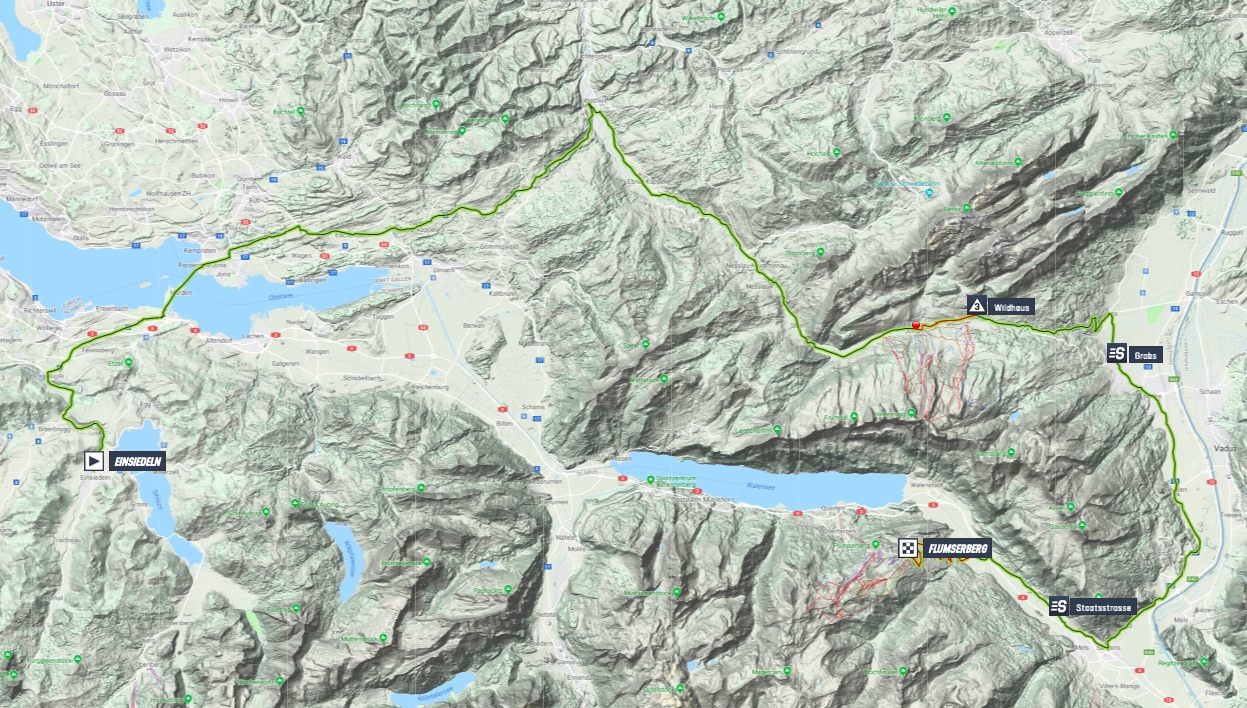
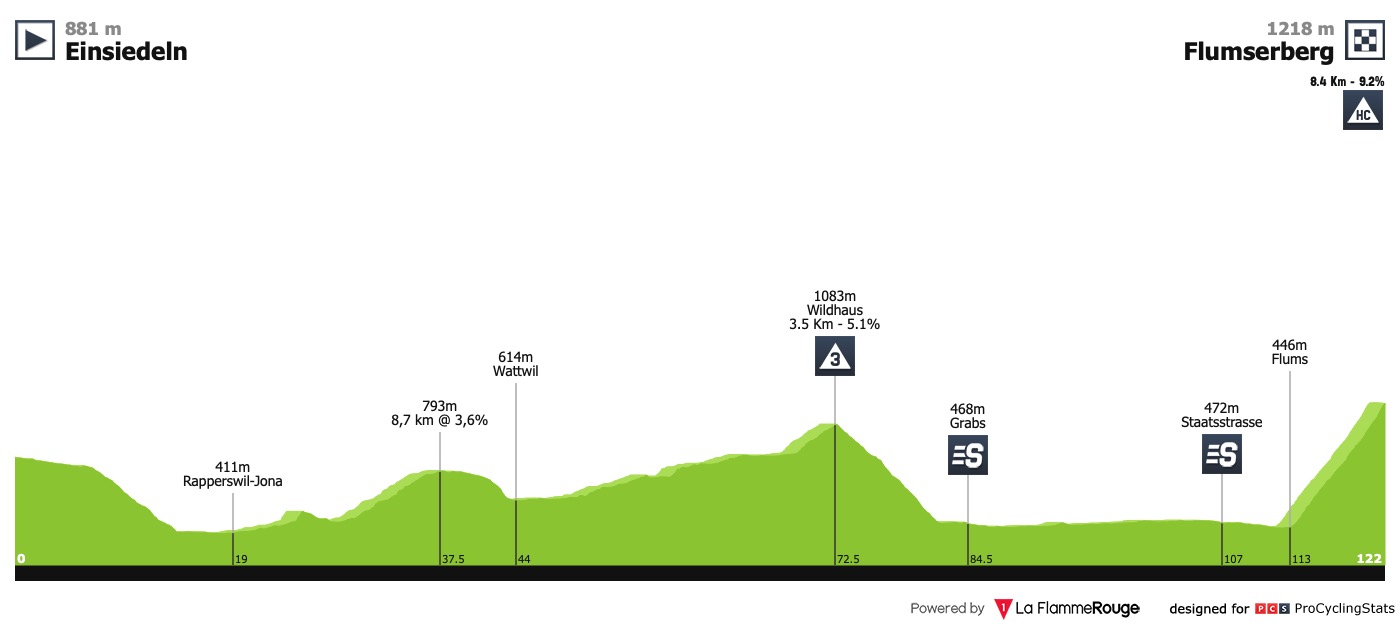
Stage 7 » Unterterzen › St. Gotthard (216.6k)
The 7th stage is the longest in the Tour de Suisse. At 216.6 kilometres, the route goes from Unterterzen to a summit finish at the Gotthard Pass. The final climb is 13.5 kilometres and the gradient sits at 7.1%, while the last 8 kilometres are cobbled.
The stage sets out along Lake Walen. The route runs false flat uphill until the first proper vertical metres lead to Flims. The climb is crested at kilometre 65 before the route continues false flat to the foot of the Lukmanier Pass, which is a long test. The Lukmanier amounts to 19.8 kilometres, while the average gradient sits at 3.9%. The maximum incline on the pass is 10%.
The peak is crested after 122.8 kilometres before a 40 kilometres descent brings the riders back to the valley. Shortly the route once again goes uphill and continues to do so for the last 50 kilometres. On fairly shallow gradients the riders climb to Airolo before tackling the relentless Gotthard Pass via the partly cobbled Tremola road. Although the pavé is well maintained, the climb is still a vibratory and energy-sapping experience.
The total altitude gain of the 7th stage is 4,080 metres, while the Saint Gotthard ascent accounts for 932 metres. The climb is 12.7 kilometres and the average gradient sits at 7.3%.

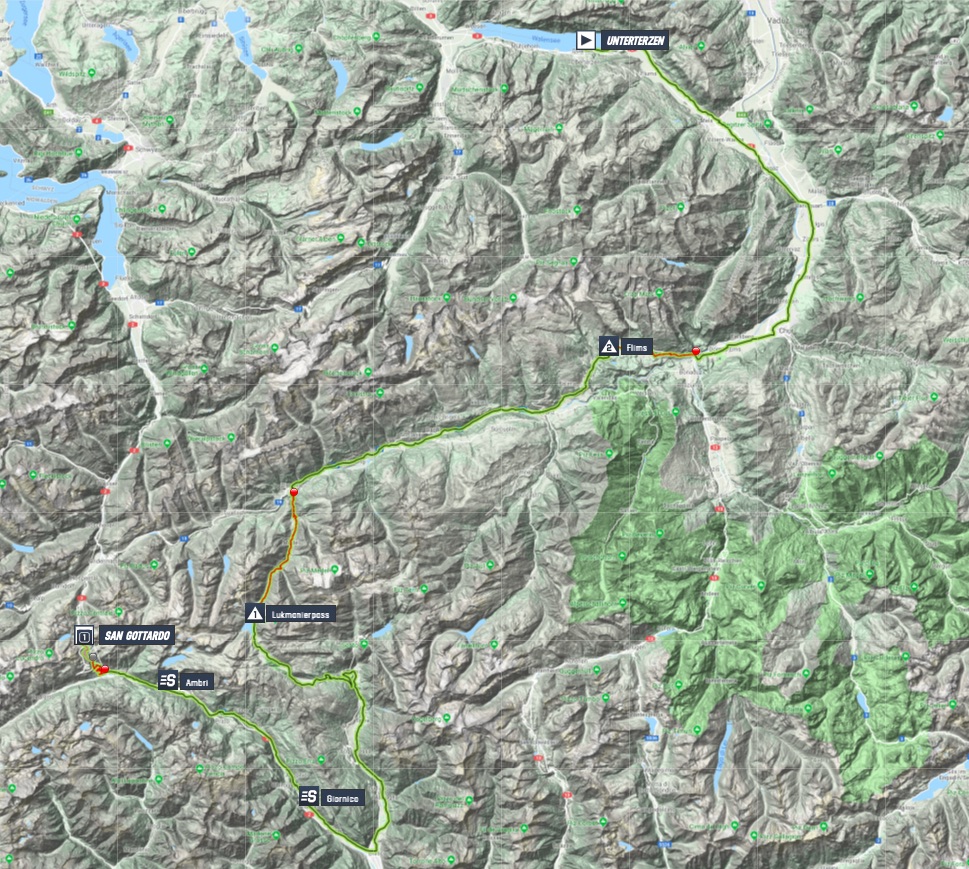
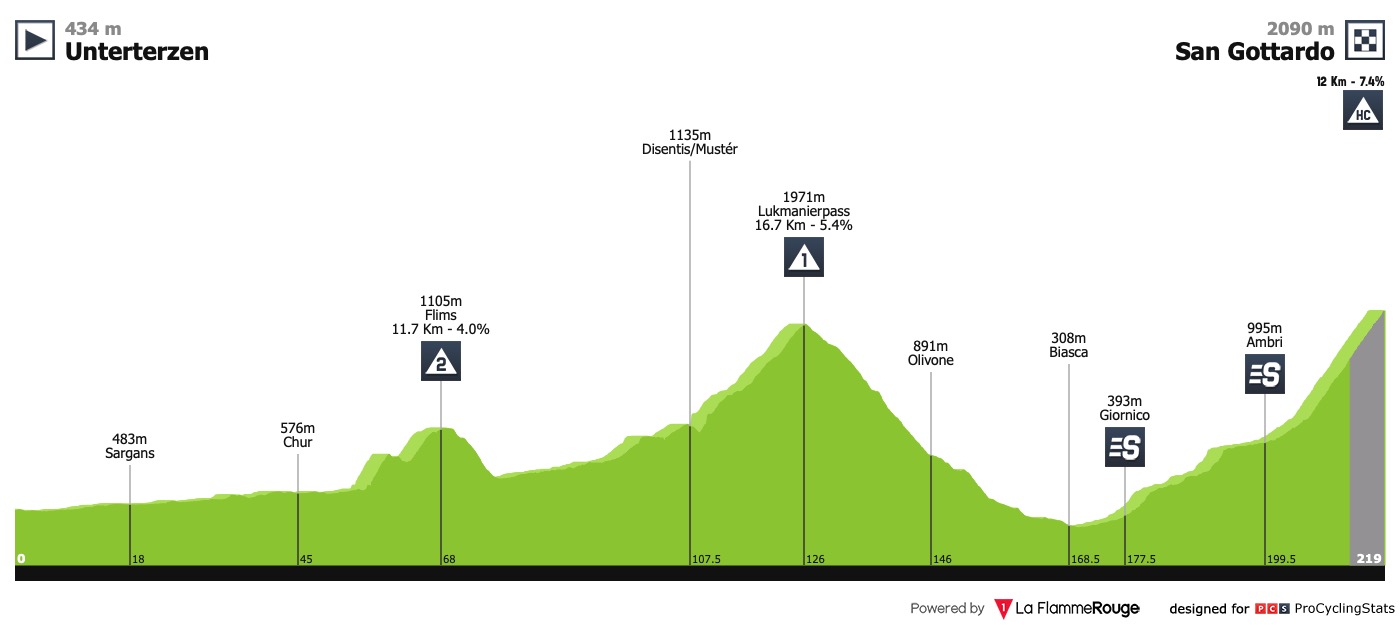
Stage 8 (ITT) Goms › Goms (19.2k)
The penultimate stage of the Tour de Suisse is a 19.2 kilometres ITT in Goms. Although the race is played at an altitude of more than 1,300 metres, the course is predominantly flat with an altitude gain of 98 metres. The intermediate time check is after 11 kilometres in Obergesteln.


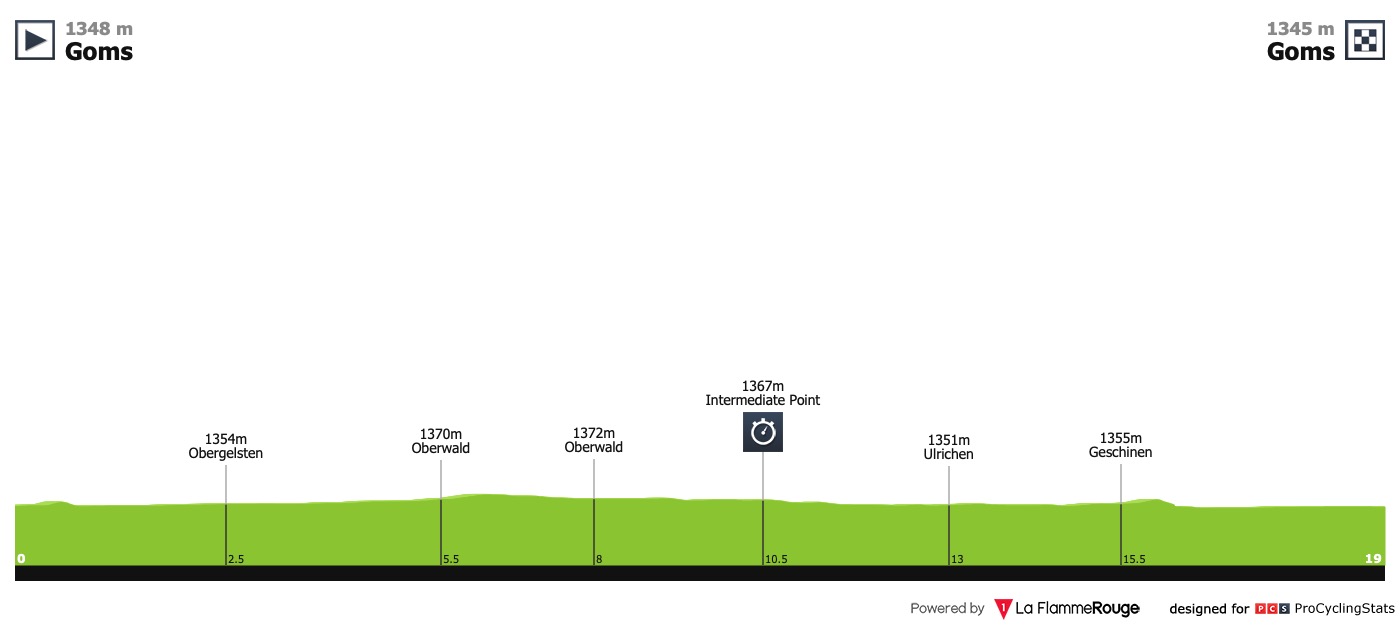
Stage 9: Goms › Goms (144.4k)
The Tour de Suisses saves its Queen Stage for last. At 144.4 kilometres, the out-and-back race in Ulrichen takes in the Furka, Susten and Grimsel passes as intermediate climbs before a 14 kilometres drop back to the valley and a final run-in of 8 kilometres on the flat.
The total altitude gain in the 9th stage of the Tour de Suisse amounts to 4,020 metres, while there is barely a flat stretch for relief between the climbs.


Following the start in the race hub of the last two days, Ulrichen, the riders tackle the Furka Pass. The 16.5 kilometres ascent slopes at 6.3%, while the famous Aston DB5-Ford Mustang car chase in James Bond’s Goldfinger was shot here. Peaking out at 2,429 metres, the Furka is the highest point on the 2019 Tour de Suisse.
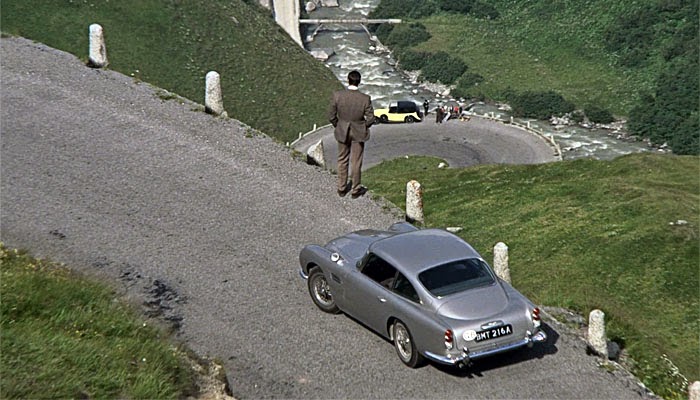

The riders fly down a descent of more than 30 kilometres before tackling the Susten Pass, which is another long yet steady test. The climb from foot to top amounts to 17.4 kilometres and the average gradient sits at 7.5%. The maximum incline on the Susten is 9%.
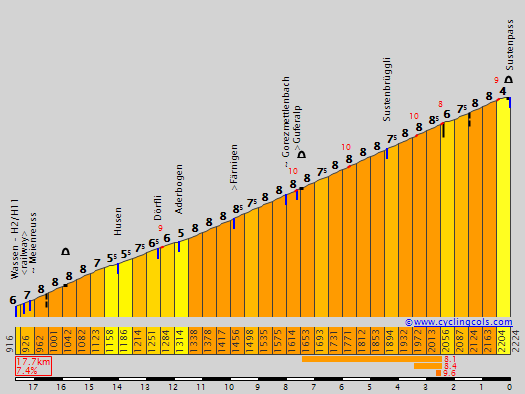

Another long descent takes the riders to the foot of the last climb of the Tour de Suisse, which is the longest climb of the day. The Grimsel Pass adds up to 26 kilometres of uphill with an average gradient of 5.9%.


Up to date startlist, here:
http://www.cyclingfever.com/editie.html ... d=MjkyNTY=
Now the bad news. While Swiss tv have extensive coverage (150 minutes live each stage) Eurosport in their wisdom are only showing 1 hour highlights each evening in the UK. Still that's better than the rest of Europe, who get zilch from "The Home of Cycling".
L'Equipe cover France with full coverage. (they are currently showing Hungary live, too)
ETB (Basque) look after Spain.

Stage 1: Langnau 9.5kms ITT
The 1st stage of the Tour de Suisse is a flat individual time trial of 9.5 kilometres. It is an out-and-back race in the Emme valley with Langnau as its start and finish hub.
The Tour de Suisse kicks into gear on an extremely fast course. It is flat and features only three corners. The route follows the river Emme until Lauperswil to head back on the same road.


Stage 2: Langnau im Emmental › Langnau im Emmental (159.6k)
The Tour de Suisse serves up a circuit race around Langnau on the second day of action. The hilly route of 159.6 kilometres takes in an altitude gain of 2,532 metres.
The 2nd stage includes three identical rounds of 53.2 kilometres. The Schallenberg is crested 21.1 kilometres into each lap and straight after the descent it goes back up again on the Chuderhüsi Pass, which is crested at kilometre 33.4. The route drops down to Langnau for a passage on the line after 53.2 kilometres.
The circuit is situated south of Langnau.


Stage 3: Flamatt › Murten (162.3k)
The 3rd stage of the Tour de Suisse is far from flat, yet a bunch sprint is the most likely outcome at the end of the 162.3 kilometres race from Flamatt to Murten.
Following the start in Flammatt the route is a near constant uphill, although at shallow gradients. The last kilometre before the first KOM in Berg – after 27.8 kilometres – is somewhat steeper. Then the riders continue on undulating roads for the most of the day. The route loops around the Lake of Gruyère and moves through Fribourg’s historic centre – with its double digit cobbles -, while the last 30 kilometres are a lap around Lake Murten.


Stage 4: Murten › Arlesheim (163.9k)
At 163.9 kilometres, the 4th stage of the Tour de Suisse travels from Murten to Arlesheim. Following a predominantly flat first part, the route serves a hilly second half. A 3.4 kilometres ascent at 9.4% is crested with 14 kilometres out.
The route is mostly played out on nearly flat roads until the Passwang appears around the halfway mark. The 11 kilometres climb is marked by gradients of 4 to 5%. After the descent the route continues to go up at even shallower gradients to enter the finish loop around Arlesheim, a place just south of Basel. The punchy Hochwald climb – 3.4 kilometres at 9.4% – is crested twice, the last time with 14 kilometres remaining. A short uphill kick at the end of the downhill leads to a flat run-in to the line.
The 4th stage of the Tour de Suisse features an altitude gain of 1,980 metres, virtually all in the second half of the race.


Stage 5: Münchenstein › Einsiedeln (177k)
The 5th stage of the Tour de Suisse offers the fast men a last chance to shine. At 177 kilometres, the route runs from Münchenstein to Einsiedeln and the last 35 kilometres are played out on the flat.
Yes, stage 5 is an opportunity for sprinters, yet the route is far from flat. The race features 2,750 vertical metres. But since virtually all of this is included in the first 144 kilometres a bunch sprint is still the most likely outcome.
On rolling to hilly roads the route cuts straight across the Swiss Plateau until a 10 kilometres climb at shallow gradients takes the riders to Sattel, where the caravan arrives at kilometre 143. The first passage on the finish line is at kilometre 153 before the riders complete a loop around Lake Sihl. The finish is near Einsiedeln Abbey, a Benedictine monastery that dates back to the year 934.



Stage 6: Einsiedeln › Flumserberg (120.2k)
At 120.2 kilometres, the 6th stage of the Tour de Suisse is the shortest of this edition. The race travels from Einsiedeln to a final climb of 10.8 kilometres to Flumserberg. The average gradient of the final haul up sits at 9%.
Although the route totals a moderate altitude gain – 1,941 metres – the final climb could open up some majors gaps on GC. So possibly the 6th stage will be the first key moment in terms of the battle for the overall victory in this year’s Tour de Suisse.
The route descends to a section of 10 kilometres on the flat before the climb to Flumserberg appears. The 10.8 kilometres ascent is steady, with gradients mostly hovering around 8 to 9%. The third and fourth kilometre before the top serve double digits, though.
Flumserberg lies high above Lake Walen. The last time the Tour de Suisse visites the ski resort was in 1995, when Marco Pantani climbed to victory with a successful solo breakaway.



Stage 7 » Unterterzen › St. Gotthard (216.6k)
The 7th stage is the longest in the Tour de Suisse. At 216.6 kilometres, the route goes from Unterterzen to a summit finish at the Gotthard Pass. The final climb is 13.5 kilometres and the gradient sits at 7.1%, while the last 8 kilometres are cobbled.
The stage sets out along Lake Walen. The route runs false flat uphill until the first proper vertical metres lead to Flims. The climb is crested at kilometre 65 before the route continues false flat to the foot of the Lukmanier Pass, which is a long test. The Lukmanier amounts to 19.8 kilometres, while the average gradient sits at 3.9%. The maximum incline on the pass is 10%.
The peak is crested after 122.8 kilometres before a 40 kilometres descent brings the riders back to the valley. Shortly the route once again goes uphill and continues to do so for the last 50 kilometres. On fairly shallow gradients the riders climb to Airolo before tackling the relentless Gotthard Pass via the partly cobbled Tremola road. Although the pavé is well maintained, the climb is still a vibratory and energy-sapping experience.
The total altitude gain of the 7th stage is 4,080 metres, while the Saint Gotthard ascent accounts for 932 metres. The climb is 12.7 kilometres and the average gradient sits at 7.3%.



Stage 8 (ITT) Goms › Goms (19.2k)
The penultimate stage of the Tour de Suisse is a 19.2 kilometres ITT in Goms. Although the race is played at an altitude of more than 1,300 metres, the course is predominantly flat with an altitude gain of 98 metres. The intermediate time check is after 11 kilometres in Obergesteln.



Stage 9: Goms › Goms (144.4k)
The Tour de Suisses saves its Queen Stage for last. At 144.4 kilometres, the out-and-back race in Ulrichen takes in the Furka, Susten and Grimsel passes as intermediate climbs before a 14 kilometres drop back to the valley and a final run-in of 8 kilometres on the flat.
The total altitude gain in the 9th stage of the Tour de Suisse amounts to 4,020 metres, while there is barely a flat stretch for relief between the climbs.


Following the start in the race hub of the last two days, Ulrichen, the riders tackle the Furka Pass. The 16.5 kilometres ascent slopes at 6.3%, while the famous Aston DB5-Ford Mustang car chase in James Bond’s Goldfinger was shot here. Peaking out at 2,429 metres, the Furka is the highest point on the 2019 Tour de Suisse.


The riders fly down a descent of more than 30 kilometres before tackling the Susten Pass, which is another long yet steady test. The climb from foot to top amounts to 17.4 kilometres and the average gradient sits at 7.5%. The maximum incline on the Susten is 9%.


Another long descent takes the riders to the foot of the last climb of the Tour de Suisse, which is the longest climb of the day. The Grimsel Pass adds up to 26 kilometres of uphill with an average gradient of 5.9%.


Up to date startlist, here:
http://www.cyclingfever.com/editie.html ... d=MjkyNTY=
Now the bad news. While Swiss tv have extensive coverage (150 minutes live each stage) Eurosport in their wisdom are only showing 1 hour highlights each evening in the UK. Still that's better than the rest of Europe, who get zilch from "The Home of Cycling".
L'Equipe cover France with full coverage. (they are currently showing Hungary live, too)
ETB (Basque) look after Spain.
"Science is a tool for cheaters". An anonymous French PE teacher.
0
Comments
-
Stage 9 profile, a perfect example of precision swiss road engineering, identical consistent gradients up and down all 3 mountains...Half man, Half bike0
-
Just checked ES player and they have it scheduled for a couple of hours every afternoon.
Many thanks for the thread.0 -
In case I'm unable to be online when the TdS PTP thread goes up, could I please have
GC: Thomas
S1 (ITT): Küng
S2 Sagan
please and thanks.PTP Champion 2019, 2022 & 20230 -
Ridgerider wrote:Stage 9 profile, a perfect example of precision swiss road engineering, identical consistent gradients up and down all 3 mountains...
Too much money, proper highway engineers would work as close as possible to original ground whilst staying within design parameters to minimise cost (and environmental impact) 0
0 -
You're joking, but there is actually a real reason for the consistent gradient of the Susten Pass.Pross wrote:
Too much money, proper highway engineers would work as close as possible to original ground whilst staying within design parameters to minimise cost (and environmental impact)Ridgerider wrote:Stage 9 profile, a perfect example of precision swiss road engineering, identical consistent gradients up and down all 3 mountains...
The original mule track which had crossed the pass for centuries was converted to a road suitable for carriages and carts in the early 1800s. This existed until the 1940s, when the Swiss Army insisted on its improvement for strategic reasons (presumably something to do with being able to move troops towards Berne without having to go north via Luzern).
As a civil eng, if you've ever done any civil eng design for the military, you will know that the max permitted slope on military roads is 8%. So the Swiss engineers had to hold to this design parameter when re-designing the Susten. Which they did but only by including those very long serpentine switchbacks.
The Swiss engineers did also consider environmental impact in one respect – apart from the tunnel interiors, they didn't use concrete; all the retaining walls were constructed with local granite so that they blended better into the landscape.
The old road is still existing in most places and can be hiked along or ridden by mountain-bike. It rises from Wassen (915 m) with small zig-zags but then is more or less only slightly offset the new road until an elevation of about 1660 m, when it crosses over to the other side of the stream. It then stays close to the stream before finally rising very sharply, with a lot of short zig-zags.
Its top is at 2255 m, where the Berggasthaus is located, so 30 m higher than the new road's highest point (the new road is at its highest as it enters the tunnel from the east). The old road then descends to briefly join the new road near the restaurant and large parking just after the tunnel west exit, before heading down to Innertkirchen (with similar differences from the new road on this side).0 -
For those without the Eurosport player, there is a distinct lack of live cycling available in the UK over the weekend.
However, both Switzerland and Hungary are available in French, from L'Equipe.
Could come in handy throughout the week, with zero live coverage of the other big TDF warm up race, for most.
https://www.tntendirect.com/L'EQUIPE-21-en-direct"Science is a tool for cheaters". An anonymous French PE teacher.0 -
The Eurosport player is great value for cycling.0
-
Looks like some of the rain is turning to snow on the hills as this miserable Summer continues.
Dennis has led from early and those that went first had it dry.
Young Marc Hirschi is ignoring the weather a ripping up the course.
Now fastest at the split."Science is a tool for cheaters". An anonymous French PE teacher.0 -
If anyone's interested Rohan Dennis won from Bodnar and Michael Matthews. A slightly odd looking top 10 that included Sagan at 7th. Geraint was the quickest of the likely GC contenders in 13th at 17 seconds.0
-
Who are the likely GC contenders? Everyone (apart from Thomas and Bernal) seems to be in France.Pross wrote:If anyone's interested Rohan Dennis won from Bodnar and Michael Matthews. A slightly odd looking top 10 that included Sagan at 7th. Geraint was the quickest of the likely GC contenders in 13th at 17 seconds.0 -
DeadCalm wrote:
Who are the likely GC contenders? Everyone (apart from Thomas and Bernal) seems to be in France.Pross wrote:If anyone's interested Rohan Dennis won from Bodnar and Michael Matthews. A slightly odd looking top 10 that included Sagan at 7th. Geraint was the quickest of the likely GC contenders in 13th at 17 seconds.
It's a very B-List race. Rui Costa (3), Kreuziger and Spilak (2) are the only riders there that have won it before. Thomas and Mathias Frank the only riders who've made the podium in Suisse.
The top ranking riders on the start-list are all one day racers (Sagan, GVA, Kristoff...).
Beyond that, it looks like some old goats (LL Sanchez), some occasional GC (GVA) and some youngsters (Mohoric, Carthy, Soler).
This link shows the start-list ranked by GC points (rolling 12month ranking), with missing riders included (gives a good picture of the quality that *isn't* there!)
https://www.procyclingstats.com/race.ph ... ter=FilterWarning No formatter is installed for the format0 -
Pross wrote:If anyone's interested Rohan Dennis won from Bodnar and Michael Matthews. A slightly odd looking top 10 that included Sagan at 7th. Geraint was the quickest of the likely GC contenders in 13th at 17 seconds.
Yes. I caught some of Geraint's ITT and at the time, didn't think it was great. Turns out he did OK.
Hard to gauge much from a prologue, though.
The result that stood out for me was returning Wilco Keldermann, who lost a whopping 1'-10".
With Oomen injured and Sunweb's two main contenders off colour, their Tour could be more about Matthews.DeadCalm wrote:Who are the likely GC contenders? Everyone (apart from Thomas and Bernal) seems to be in France.
True, pretty thin pickings.
Mas, Soler, Konrad and the aforementioned Wilco and...........................Fabio Aru, should he change his mind.
Then we get down to the likes of another crash returnee Pierre Latour and old dog Kreuziger."Science is a tool for cheaters". An anonymous French PE teacher.0 -
Blazing Saddles wrote:Pross wrote:If anyone's interested Rohan Dennis won from Bodnar and Michael Matthews. A slightly odd looking top 10 that included Sagan at 7th. Geraint was the quickest of the likely GC contenders in 13th at 17 seconds.
Yes. I caught some of Geraint's ITT and at the time, didn't think it was great. Turns out he did OK.
Hard to gauge much from a prologue, though.
The result that stood out for me was returning Wilco Keldermann, who lost a whopping 1'-10".
With Oomen injured and Sunweb's two main contenders off colour, their Tour could be more about Matthews.
Thomas said he didn't have a good day yesterday - not as fresh as he thought he was. Went out a bit too hard and couldn't really put out much at the end.Warning No formatter is installed for the format0 -
Today's open climbs of the race, which they do three times each.

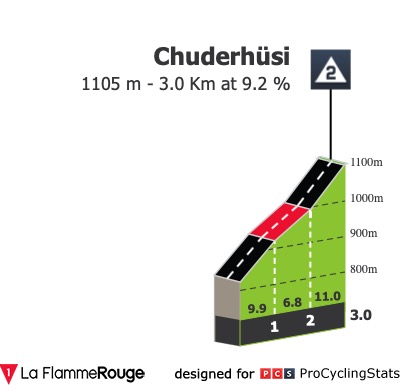
This, is the final climb of the day as well. Tops out with 18kms to go...."Science is a tool for cheaters". An anonymous French PE teacher.0 -
LLS took a flyer about 10km out and seems to have a 33 second lead with 4k to go over a reduced bunch although there are some good sprinters in there including Sagan and Matthews so will be some ride if he holds on.0
-
2km to go and 28" so should hold on if the time gaps are accurate. Stage nowhere near as selective as you would think with a very large bunch. Stunning scenery and weather.
Not sure if this live or not!0 -
LLS by about 7" with Sagan taking the sprint for second.0
-
Could have been a slightly dodgy finish with a left hand bend immediately after the finish line but it was slightly uphill so they weren't carrying too much speed into it.0
-
Very tight at the top, Asgreen leads on the same time as Sagan with the top 4 separated by 1 second. Quite an achievement after there's been a TT albeit a short one. Thomas in 8th at 18".
Ben Swift finished 10th today, I'd forgotten all about him!0 -
32 kms to go. The weather in Europe has improved.
It seems only Dutch Eurosport have the race live on tv...."Science is a tool for cheaters". An anonymous French PE teacher.0 -
It's on ES player (uk); 21km to go.0
-
I have it from Swiss tv.
16kms going to be covered in 20 minutes at this pace."Science is a tool for cheaters". An anonymous French PE teacher.0 -
Break given up0
-
Break allowed to stay out a bit longer, Pellaud (?) taken a solo flyer off the break at 8 km.0
-
Sagz0
-
Bullied his way to front and that was that0
-
Fantastic job of taking Degenkolb's leadout legally.PTP Champion 2019, 2022 & 20230
-
Tried to find a final kms video for stage two and ended up watching Velon's little highlights video instead - which showed precisely naff all. Sanchez attacking, a two second clip of him riding solo and then his celebration, didn't even see the rest cross the line0
-
ShutupJens wrote:Tried to find a final kms video for stage two and ended up watching Velon's little highlights video instead - which showed precisely naff all. Sanchez attacking, a two second clip of him riding solo and then his celebration, didn't even see the rest cross the line
Are you.... are you suggesting that Velon's content is a bit rubbish?Fckin' Quintana … that creep can roll, man.0 -
The breakaway for today.
Robin Carpenter (Rally UHC), Simon Geschke (CCC Team), Gian Friesecke (Switzerland), Taco van der Hoorn (Jumbo-Visma)
Meanwhile, still waiting upon any live coverage.
The earlier promised two and a half hours by SRF Deux's schedule is in fact about one hour of the racing and half hour chit chat."Science is a tool for cheaters". An anonymous French PE teacher.0

